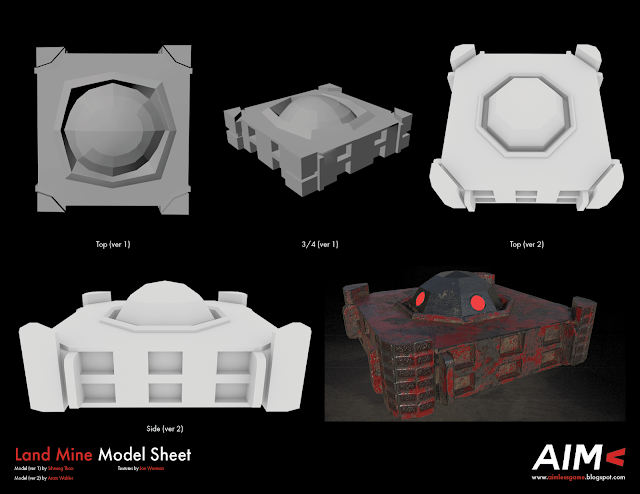Week
Thirty-seven
(or
The End Is Nigh)
The
AIM< website is now updated
with the game, process
book, and game
design document. Enjoy!
I
spent this week thinking about what I would post to wrap up my thoughts and
reflect what I learned during AIM<’s development. While compiling the materials for the
AIM< process book, I wrote a post-mortem with input from the rest of Violent
Traversal.
After
reading through the post-mortem again, I’ve decided that it nicely sums up the
development process and leaves nothing out that I could concisely elaborate.
So, this will be my last post for my AIM< dev blog. Thank you very much for
taking the time to read the posts. I hope that my trials, errors, and successes
can encourage you in any of your creative endeavors.
If
you’re interested in any of my future dev blogs or projects, check out my homepage and blog page. I will be working
on new projects soon. Until next time, enjoy the post-mortem!
“AIM<
is the culmination of two semesters worth of teamwork amongst individuals with
a passion for learning game design and development. The development cycle
reflects the many trials, errors, and successes experienced while learning new
skills and disciplines. Our goal was to develop a fun game that was markedly
different from a majority of readily available games.
From
the beginning, the playful and abstract concept of “cannon shooting cannons”
took a great deal of time to explore. The initial concept met our goal of being
different from other games but also brought the challenge of trying to find
enough common ground with games we had experienced to know where to begin.
We
saw the gameplay as being comprised of three genres; puzzle, platform, shooter,
and some exploration. While these genres have been combined in other games, our
goal was to reject some conventions by featuring shooting as the primary means
of moving and interacting with the environment.
A
copious of time passed before a mission statement was finalized. This
contributed to the development and persistence of a gameplay identity crisis
throughout a majority of the design process. The identity crisis caused many
difficulties, including setting task goals and establishing scope. Scope grew
out of control. When we realized the issue, we were forced to start cutting
features and content to have a cohesive project by the deadline. Our struggle
to manage scope was compounded by a lack of experience with anticipating the
amount of time required to augment existing skills or learn new ones.
Level
design proved to be a particularly important skill that no one on the team had
much experience with. We started this process very late in development and
discovered a pipeline was needed for producing levels. Developing such a
pipeline was a process that should have been addressed much earlier due to the
amount of time required. Had level design been started sooner, the game’s
identity crisis may not have persisted as long since we would have discovered
which proposed mechanics worked through the level design process.
In
spite of difficulty with scope, we found that establishing consistent modes of
communication early on helped us through many of the challenges we faced. Our
team established strong internal communication from the onset, which promoted a
healthy teamwork environment. Communication and teamwork continued to be strong
throughout AIM<’s development cycle, eroding only slightly towards the end due
to external pressure from other coursework.
Another
portion of the development that we
consider successful is the realization of AIM<’s characters. By offering two
unique characters, we offered players different gameplay experiences. The Mech
and Drone were designed to reflect gameplay differences through their size
difference, changes in mobility, varying levels of durability, and differing
functionality.
As
the development cycle for AIM< comes to a close, we believe that we have
overcome the challenges we faced and gained valuable experience designing a
complete game. We look forward to sharing AIM< with an audience of family,
friends, and our fellow students.”
Thanks
for reading!














